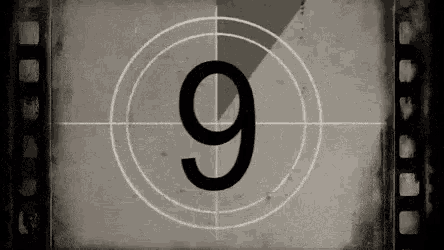About a decade ago I watched a wildly entertaining and mildly
disturbing documentary called Confessions of a Superhero (2007). The film
follows four street performers who dress up in costumes and prowl Hollywood
Boulevard, offering to take photos with tourists for tips. Sometimes they get
aggressive in their pursuit of those tips and police get involved.
Aside from the obvious mental problems many of these performers exhibit, what struck me was their unanimous determination to become movie stars, despite the absence of any discernable talent. They had convinced themselves that panhandling in superhero costumes would lead to discovery, movie offers, fame and fortune. In the 12 years since the documentary was released, the gal who roleplayed as Wonder Woman went on to marry B-movie star Casper Van Dien (Starship Troopers; 1997), so you could say she came the closest to success.
Mostly, though, the documentary is a meditation on our cultural obsession with celebrity. And what is life without the pursuit of a dream?
To that I say there are dreams and then there are delusions, and some people cannot tell the difference.
Aside from the obvious mental problems many of these performers exhibit, what struck me was their unanimous determination to become movie stars, despite the absence of any discernable talent. They had convinced themselves that panhandling in superhero costumes would lead to discovery, movie offers, fame and fortune. In the 12 years since the documentary was released, the gal who roleplayed as Wonder Woman went on to marry B-movie star Casper Van Dien (Starship Troopers; 1997), so you could say she came the closest to success.
Mostly, though, the documentary is a meditation on our cultural obsession with celebrity. And what is life without the pursuit of a dream?
To that I say there are dreams and then there are delusions, and some people cannot tell the difference.
I mention all this because Christopher Dennis, the street
performer who dressed up as Superman, was one of the first costumed panhandlers
on Hollywood Boulevard. Some say he bore an uncanny resemblance to Christopher
Reeves, who played Superman in four movies from 1978-1987.
Dennis had been panhandling in costume more than 25 years
when his body was found over the weekend head-first in a clothing donation bin
in the San Fernando Valley, about 10 miles from where he plied his trade. He
was 52. Early police reports say no foul play is suspected and that he was most
likely rooting around for something to wear.
Dennis had frequently been homeless. A recovering drug addict, his wife left him after being unable to cope with the 15,000 items of Superman memorabilia he had packed into their trailer. A couple years ago, another homeless man nearly beat Dennis to death with a golf club, stole his Superman costume and set it on fire. With the help of a friend, Dennis raised some money with a crowdfunding campaign to buy another costume. The leftover funds paid for rent until the money ran out and he was back on the streets.
Dennis claims several times in the documentary that he is the son of Sandy Dennis, who won a Best Supporting Actress Oscar for Who’s Afraid of Virginia Woolf? (1966). There is no record of Sandy Dennis ever having had a child. The actress died in 1992. Christopher Dennis stuck to his story and shared it with anyone who would listen until the day he died.
Dennis had frequently been homeless. A recovering drug addict, his wife left him after being unable to cope with the 15,000 items of Superman memorabilia he had packed into their trailer. A couple years ago, another homeless man nearly beat Dennis to death with a golf club, stole his Superman costume and set it on fire. With the help of a friend, Dennis raised some money with a crowdfunding campaign to buy another costume. The leftover funds paid for rent until the money ran out and he was back on the streets.
Dennis claims several times in the documentary that he is the son of Sandy Dennis, who won a Best Supporting Actress Oscar for Who’s Afraid of Virginia Woolf? (1966). There is no record of Sandy Dennis ever having had a child. The actress died in 1992. Christopher Dennis stuck to his story and shared it with anyone who would listen until the day he died.
We could dwell on the sorrow & the pity of a life lived
tragically along the boulevard of broken dreams, but that’s not what I’m about.
No, I was shaking my head this morning at the outpouring of sympathy for
Christopher Dennis in certain corners of the Internet. Condolences are all very
nice and, yes, even obligatory. I merely wish that people who make a big deal
over a troubled person’s death, especially people close to that person, would instead
have done something helpful while the individual was still alive.
Rubbernecking is borne on the natural human instinct of satisfying our curiosity and to some degree that’s what documentary films deliver. Confessions of a Superhero is a fascinating glimpse into the lives of damaged people clinging to threads of hope. But on reflection, I see that if rubbernecking is all we do, then we’re not part of the solution; we’re part of the problem. So I’m delivering a case of canned goods this evening to Loaves & Fishes, the local food pantry. It’s not much, I confess, but perhaps it compensates somewhat for this lengthy post. Thanks for reading.
Rubbernecking is borne on the natural human instinct of satisfying our curiosity and to some degree that’s what documentary films deliver. Confessions of a Superhero is a fascinating glimpse into the lives of damaged people clinging to threads of hope. But on reflection, I see that if rubbernecking is all we do, then we’re not part of the solution; we’re part of the problem. So I’m delivering a case of canned goods this evening to Loaves & Fishes, the local food pantry. It’s not much, I confess, but perhaps it compensates somewhat for this lengthy post. Thanks for reading.
Cinema Uprising copyright © 2019 by Steve B. Evans. All rights reserved.










